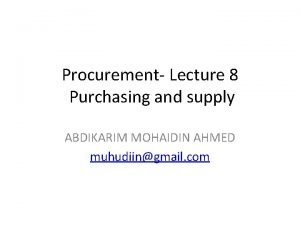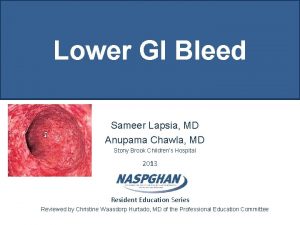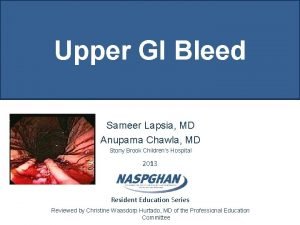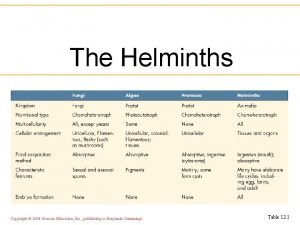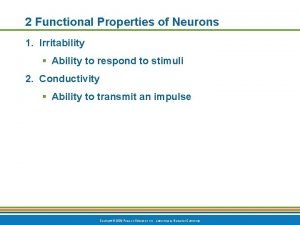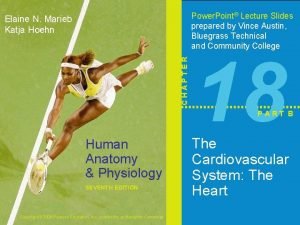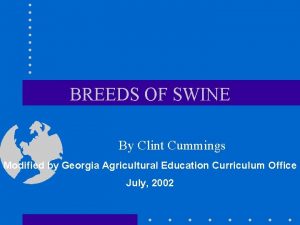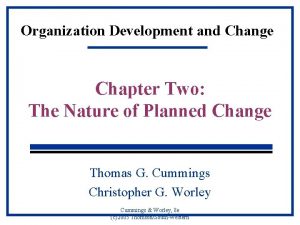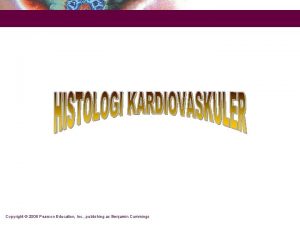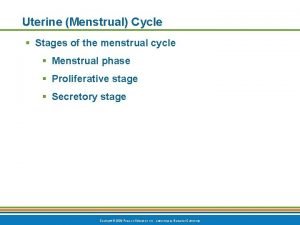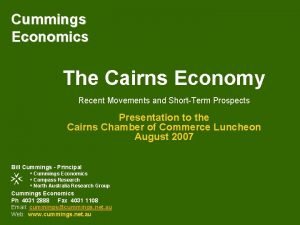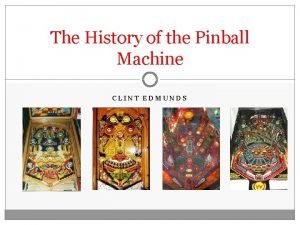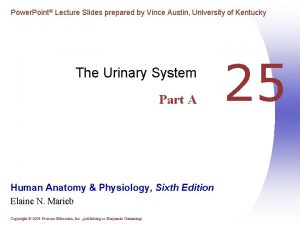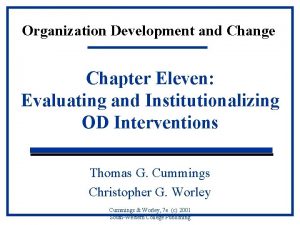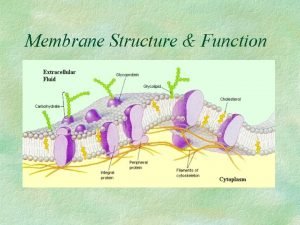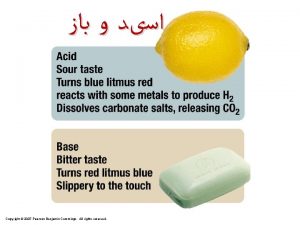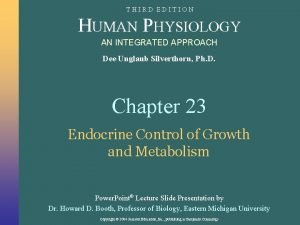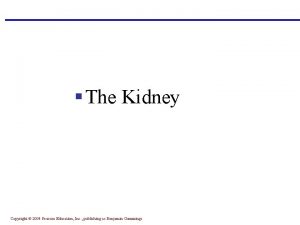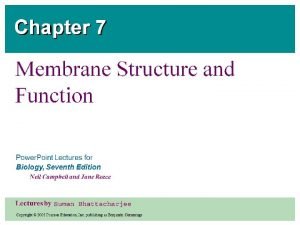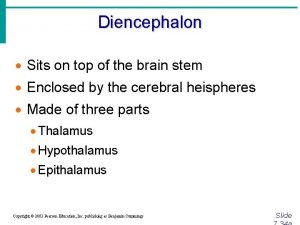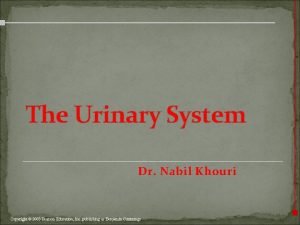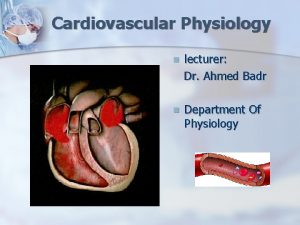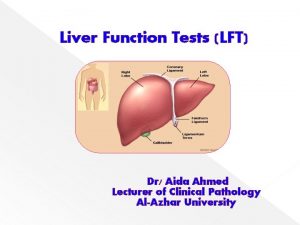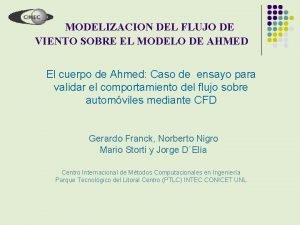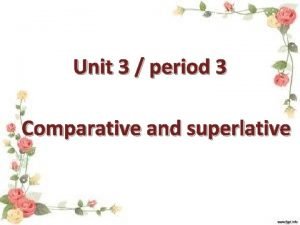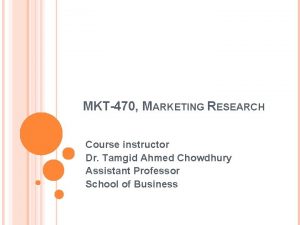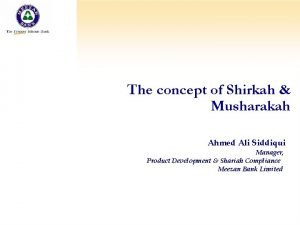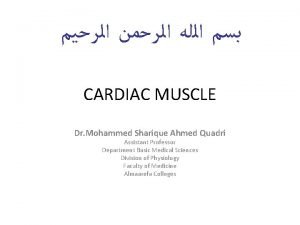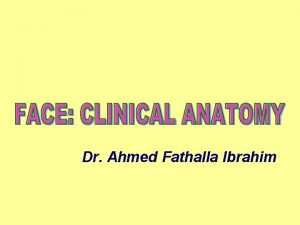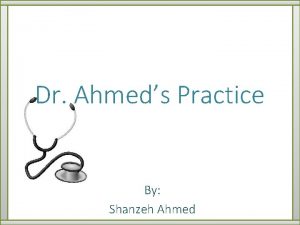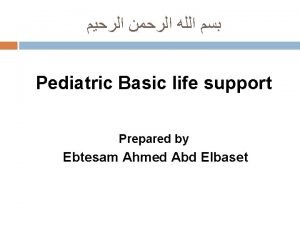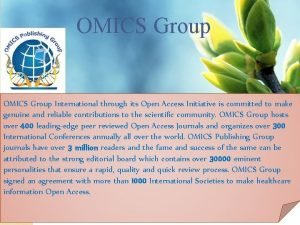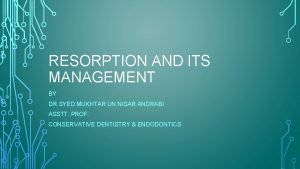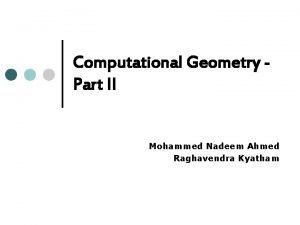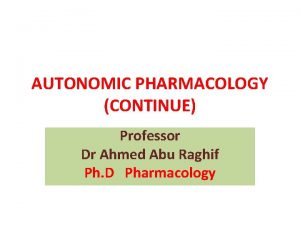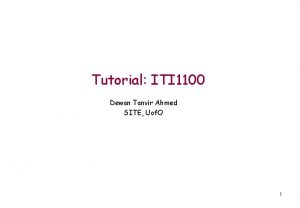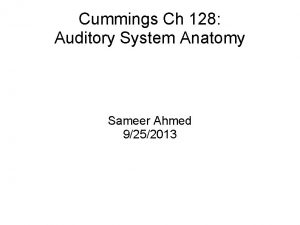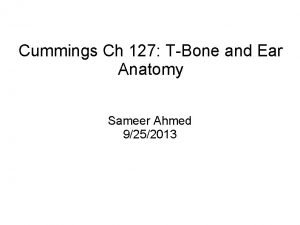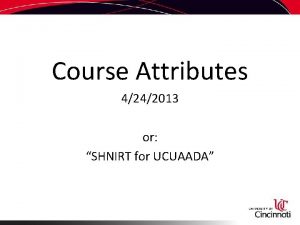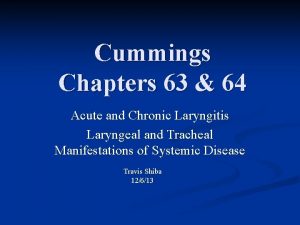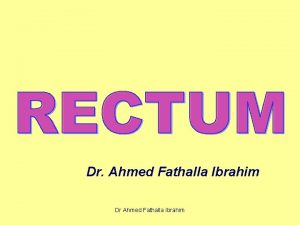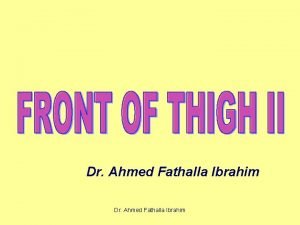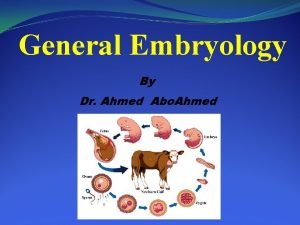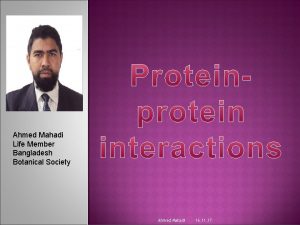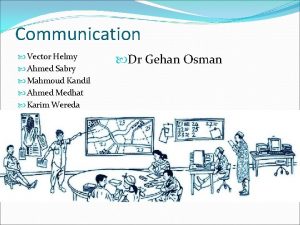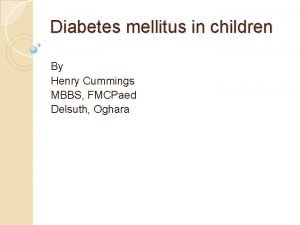Cummings Chapters 92 94 Sameer Ahmed 4242013 Ch































































- Slides: 63

Cummings Chapters 92 -94 Sameer Ahmed 4/24/2013

Ch 92: Oral Manifestations of Systemic Diseases

Cardiac • Association between heart disease and periodontal disease • Calcium channel blockers gingival enlargement • Disturbance in taste ACE, Ca Channel blockers • Cyclosporine gingival enlargement

Pulmonary • Chronic use of corticosteroids suppresses hypothalamic-pituitary-adrenal axis – Result in acute adrenal insufficiency during stress – Therefore steroid replacement therapy is sometimes required for extensive dental and surgical procedures • The classic oral mucosal lesion of TB is a painful, deep, irregular ulcer on the dorsum of the tongue

Endocrine • Diabetes – Association between severe periodontitis and an increased risk of poor glycemic control. • Adrenal – Addison's disease, caused by primary adrenal insufficiency or hypoadrenalism, include diffuse, cutaneous pigmentation of the skin and mucous membranes – With hyperadrenalism or Cushing's disease, present with moon shaped face and muscle weakness

Endocrine • • Thyroid – Macroglossia is the primary oral manifestation of hypothyroidism • Parathyroid – Hyper PTH: Bone demineralization from excessive osteoclast function (indirect effect of PTH, RANKL) • Subsequent fibrous-tissue replacement can produce welldefined cystic radiographic radiolucencies (Brown tumor)

Autoimmune • Sjogren's – Primary SS salivary and lacrimal gland disorders – Secondary SS the disorder occurs with other autoimmune diseases such as RA – Focal, periductal, mononuclear cell infiltrates (mainly T cells) in exocrine tissues and autoantibodies (particularly anti-Ro/SSA, anti. La/SSB, and rheumatoid factor) – 44 -fold increase in B-cell lymphoma risk

Autoimmune • SLE – Approximately one quarter of SLE patients have oral lesions – Usually superficial ulcers with surrounding erythema • • Dermatomyositis/Polymositis – Can involve tongue and UPPER esophagus (upper third, involving UES)

Bacteria • Porphyromonas gingivalis and Treponema denticola periodontal disease • Staphylococcus aureus and Streptococcus viridans salivary gland infections • Streptococcus mutans and Lactobacillus sp new and recurrent dental caries.

Syphillis • Congenital syphilis – Hutchinson's incisors (notched incisors) – Mulberry molars (multiple rounded rudimentary enamel cusps on the permanent first molars).

Lichen Planus • Lichen planus is a chronic, mucocutaneous, autoimmune disorder • Some evidence suggests that lichen planus lesions are predisposed to malignant transformation

Pemphigus Vulgaris • Pemphigus vulgaris is an autoimmune disease caused by antibodies created against desmoglein 3 – Disassociation of the epithelium at the suprabasal layer with acantholysis – +Nikolsky's sign

Vitamin Deficiencies • Vitamins A and B 2 (riboflavin) → angular chelitis • Vitamin B 12 → aphthous ulcer, angular chelitis, loss of tongue papillae • Niacin → swollen tongue, pellagra

Neurologic • In myotonic muscular dystrophy, why does the tongue get large? Enlargement of the tongue caused by fatty deposits.

Renal • Heparin is administered during dialysis to prevent blood coagulation – dental procedures should be performed on alternate days of dialysis

Liver • Oral microbial infections and impaired wound healing – Most common oral complications of patients with cirrhosis – Result of alcohol-induced immunosuppression

Heme • Von Willebrand's disease – Most common hereditary bleeding disorder – Deficiency of secondary factor VIII (v. WF) – Resulting in poor platelet adhesion • Wiskott-Aldrich syndrome – X-linked recessive inherited disease, – Recurrent infections, eczema, and chronic thrombocytopenia (in OC mucosa, manifests with petechiae and ecchymoses)

Inherited Disorders • Cowden's disease – Autosomal dominant – Warty/hamartomatous papules on the face, arms, and mucous membrane of the mouth • Melkersson-Rosenthal syndrome – Unilateral facial paralysis – Edema of the periorbital skin – Fissured tongue with papillary projections

Ch 93: Odontogenesis, Odontogenic Cysts, and Odontogenic Tumors

Background • Odontogenic tumors: mix of epithelium and mesenchyme, hard to analyze histologically • All odontogenic tumors/cysts related to the stomodeum in some way.

Embryology The stomodeum: depression between the brain and the pericardium in an embryo, and is the precursor of the mouth and the anterior lobe of the pituitary gland.

Epithelial Odontogenesis • The four main stages of epithelial odontegenesis are (1) dental lamina, (2) enamel organ, (3) reduced enamel epithelium, and (4) Hertwig's epithelial root sheath.

• The enamel organ is generally divided into the bud stage, cap stage, and bell stage. – Epithelial bands → dental lamina –> 20 tooth buds • Reduced enamel epithelium – Consists of inner enamel epithelium (ameloblast cells) and outer enamel epithelium (cuboidal cells from dental lamina). – As the cells of the reduced enamel epithelium degenerate, the tooth is revealed progressively with its eruption into the mouth.

• Hertwig's rooth sheath: a layer of cells that separate away from the reduced enamel epithelium, as they move towards the tooth root. – On their way, they leave behind rests of Malassez • small islands of epithelial tissue that are formed during tooth root development, they are located in the region of the periodontal ligament


Cysts • Periapical/Radicular cyst The periapical cyst must be associated with a nonvital tooth, located at the tooth apex. Tx: Most of these cysts adequately resolved with endodontic therapy. If a radiolucency persists longer than 6 months following endodontic therapy, enucleation and histopathologic review are necessary. [

Cysts • Dentigerous cysts • Form when fluid accumulates between reduced enamel epithelium and tooth crown of an unerupted tooth (near the cementoenamel junction). – Usually occurs in impacted teeth (3 rd molars, maxillary canines) – Some malignant potential (SCCa, mucoep, Tx: Dentigerous cysts are usually easily ameloblastoma) enucleated at the time of tooth extraction.

Cysts • Lateral Periodntal Cyst: unilocular cyst, from dental lamina, on the lateral surface of a vital tooth – Tx: enucleation • Botryoid Odontogenic Cyst: multilocular cyst, from dental lamina, on the lateral surface of a vital tooth – Tx: enucleation + curettage

• Keratinizing odontegenic cyst is NOT the same as an odontegenic keratocyst (OKC, more recently named as an keratocystic odontogenic tumor)

Cysts • OKCs are most common in the mandibular third molar area, but can be in the maxilla or mandible • 2 nd to 3 rd decade most common age group • swelling, pain, trismus, sensory deficits, and infection being the most common complaints – But can be an incidental finding on xray also • Unilocular vs multilocular; multiple vs single cysts – With multiple cysts, think about working up basal cell nevus syndrome

OKC • Tx: Debatabe. • Author says dont use aggressive approach on everyone (e. g. : for large lesions, try decompression and then curettage as opposed to excision and tooth extraction). • 1 st occurrence: excise the entire lesion, especially the inner cyst lining, limited bone curettage • Recurrences: be more aggressive (except in basal cell nevus syndrome patients as recurrences are probably new lesions)

Cysts • Calcifying Odontogenic Cyst • It can fall into 2 categories: cystic or neoplastic • Cystic → from early dental lamina, anterior mandible most common. – On path → ghost cells seen (but not pathognomonic). – Tx: enucleation for simple, unilocular; enculeation and curettage for multilocular • Neoplastic; ghost cell tumor → The epithelial odontogenic ghost cell tumor is an unusual jaw lesion that consists of solid, tumor-like mass, though a cystic area is usually present as well.

• Malignant transformation of cysts → it's rare but can happen in any cyst (when we do hear about it, it's usually a dentigerous cyst or OKC). Often happen in residual cysts left in an edentulous area.

Odontogenic Tumors • Ameloblastoma (intraosseus, solid, multicystic) • Neoplasm of enamel; comes from the lining of odontegenic cyst, reduced enamel epithelium, or odontogenic rests of tissue. – 80% in the mandible – Radiology: “soap bubble” or honeycomb appearance – Path: histologic subtypes include follicular, plexiform, granular cell, acanthomatous, desmoplastic, basal cell, and keratinizing – Tx: at least 1 cm margins in mandible (proximal and distal directions), 1 -2 cm margins in maxilla • However, Tx not well defined (enuclation alone is def not a good option)

Odontogenic Tumors • Unicystic ameloblastoma – Posterior mandible most common – Asymptomatic – Radiology: Single radioloucent, unilocular, welldemarcated lesion, <2 cm – No extension into connective tissue (no plexiform or follicular variants) – Tx: enucleation only; generally no recurrence

Odontogenic Tumors • Peripheral Amelobastoma (Extraosseus) – Peripheral ameloblastomas present as mucosal masses and arise from the gingiva or alveolar mucosa. – If any bone is involved, it is not a peripheral amelobastoma – Tx: excision; generally no recurrence

• Malignant Ameloblastomas – Benign histopathologic features of amelobastoma but metastasize to distant locations – Lung is most common • Ameloblastic Carcinoma – Cytopathologic features associated with malginangy; +/- metastasize

• Ameloblastic Fibroma • Benign odontogenic neoplasm characterized by proliferation of immature mesenchymal and ameloblastic cells (found in developing teeth) • Posterior mandible • Well-defined radiolucency • Tx: Unilocular → conservative enucleation; Multilocular –> segmental rsxn if jaw integrity is messed up

• Calcifying Epithelial Odontogenic Tumor (Pindborg Tumor) – Mandible > Maxilla – Molar and pre-molar region – Well-circumscribed, multilocular > unilocular, mixed radiolucent-radiopaque – Tx: conservative surgical removal (usually enucleation and curettage) • However, tumors with clear cell changes may be more aggressive • Segmental rsxn reserved for those tumors which have messed up the jaw already

• Adenomatoid Odontogenic Tumor – Most innocuous odontogenic tumor – Comes from the enamel or from the dental lamina – 2/3 female, 2/3 in maxilla – Mixed radiolucent-radiopaque – Tx: Enucleation, low recurrence rate

Ch 94: TMJ Disorders

• Temporomandibular disorders: – Intracapsular disorders, or true abnormalities of the temporomandibular joint (TMJ), and muscular disorders, or myofascial pain – Symptoms: facial pain, earache, and headache.

Anatomy • TMJ Synovial joint • Articulating surfaces: glenoid fossa and condylar process • Articular disk is between these 2 surfaces – Articular disk separates the joint space into 2 compartments – The inferior compartment: anterior and posterior rotational The superior compartment: translational movement between the disk and the glenoid fossa



Fractures • Condylar or subcondylar fractures – preauricular pain and tenderness, difficulty in opening the mouth, and malocclusion – Unilateral fracturejaw deviation to the affected side on attempted mouth opening – Bilateral fractures frequently produce an anterior open (loss of support in ascending ramus)

Dislocation • Acute dislocation • Condyle translates anterior to the articular eminence and becomes locked in that position. – Tx: apply downward pressure on the posterior mandible while placing upward and backward pressure on the chin. – Restrict mandibular opening for 2 to 4 weeks – NSAIDs

Dislocation • Chronic Dislocation – Tx: inject sclerosing agent into the TMJ capsule to produce scarring of the stretched tissues

Neoplasms • Rare to have tumor originating in TMJ • Often, these tumors are not radiosensitive so you need to operate

Intracapsular Disorders 1. Anterior disk displacement with reduction – Mouth opening Clicking, popping sound – Normal range of mandibular motion – Treatment of these painful joints consists of soft diet, self-limitation of opening, NSAIDS, splint therapy, and physical therapy

Anterior displacement of the intraarticular disk with reduction

Intracapsular Disorders 2) Anterior Disk Displacement w/o Reduction – Closed lock – The maximum interincisal opening (MIO) is generally only 25 to 30 mm – Mandible deviates toward the affected joint • Tx: – Acutely displaced disks manual reduction – Chronic: stabilization splint

Intracapsular Disorders 3) Degenerative Joint Disease – Most frequent abnormal condition affecting the TMJ • Tx: – NSAIDs, soft diet, limited jaw movement, and use of a stabilizing bite splint to help reduce the effects of chronic clenching or bruxis – When nonsurgical management fails and when there are bony change on the articular surface of the condyle can opt for surgery

Ankylosis • Ankylosis = stiffness of a joint due to abnormal adhesion and rigidity of the bones of the joint • 2 most common causes: – rheumatoid arthritis and traumatic injuries

TMJ Surgery • Absolute indications – Treatment of neoplasms – Growth abnormalities – Ankylosis of the joint 1) Arthrocentesis – Simplest 2) Arthroscopy – Minimally invasive 3) Arthrotomy (open joint surgery) – E. g. debridement or disk repositioning








 Stomodeum
Stomodeum Ahmed muhudiin ahmed
Ahmed muhudiin ahmed Sameer awsare kaiser
Sameer awsare kaiser Sameer lapsia
Sameer lapsia Sameer paranjpye
Sameer paranjpye Black tarry stools
Black tarry stools Buffalo bills ee cummings
Buffalo bills ee cummings Pearson education 2004
Pearson education 2004 Poem about plums by ee cummings
Poem about plums by ee cummings The furthest distance ive travelled poem
The furthest distance ive travelled poem Cummings
Cummings Maddie cummings
Maddie cummings Ivor cummings
Ivor cummings Benjamin cummings
Benjamin cummings Benjamin cummings
Benjamin cummings Clint cummings
Clint cummings The furthest distance ive travelled poem
The furthest distance ive travelled poem Holly cummings
Holly cummings Cummings and worley change model
Cummings and worley change model Layers and components of the artery wall
Layers and components of the artery wall Benjamin cummings
Benjamin cummings Sttranslate
Sttranslate History of the pinball machine
History of the pinball machine Cummings et al
Cummings et al Juxtaglomerular cells
Juxtaglomerular cells Cummings
Cummings Functions of membrane proteins
Functions of membrane proteins Pearson benjamin cummings
Pearson benjamin cummings Bill st mane
Bill st mane Love is thicker than forget
Love is thicker than forget Metabolic action of growth hormone
Metabolic action of growth hormone Quickserve cummins com
Quickserve cummins com Maritza cummings
Maritza cummings Benjamin cummings
Benjamin cummings Pearson education 2004
Pearson education 2004 Pearson education inc publishing as benjamin cummings
Pearson education inc publishing as benjamin cummings Benjamin cummings
Benjamin cummings Alma cummings dance marathon
Alma cummings dance marathon Ozone layer depletion
Ozone layer depletion Brain stem
Brain stem Cummings
Cummings Ashlee_cummings_
Ashlee_cummings_ Mufti kamaluddin ahmed
Mufti kamaluddin ahmed Botox
Botox Dr ahmed badr
Dr ahmed badr Glutamate oxaloacetate transaminase
Glutamate oxaloacetate transaminase Modelo de ahmed
Modelo de ahmed The hajji
The hajji Eastern comparative and superlative
Eastern comparative and superlative Anna molka ahmed
Anna molka ahmed Dr. tamgid ahmed chowdhury
Dr. tamgid ahmed chowdhury Saad ahmed economics
Saad ahmed economics Shirkat ul ainan
Shirkat ul ainan Ahmed quadri
Ahmed quadri Jasmine ahmed
Jasmine ahmed Ahmed fathalla
Ahmed fathalla Shanzeh ahmed houston
Shanzeh ahmed houston Pediatric assesment triangle
Pediatric assesment triangle Ahmed miree
Ahmed miree Syed mukhtar ahmed
Syed mukhtar ahmed Dr mohammed ahmed
Dr mohammed ahmed Ahmed abu raghif
Ahmed abu raghif Ahmed salemi
Ahmed salemi Iti 1100
Iti 1100

